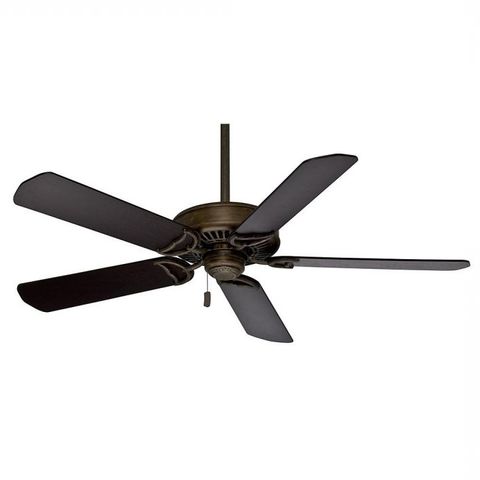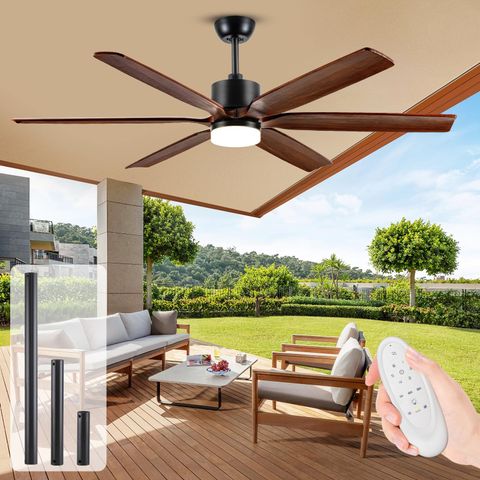Picture this: You’re enjoying a warm summer evening, and suddenly your outdoor fan just… stops working. No spin, no breeze, nothing. You check the power source, verify the switch, and even look at the wiring. Everything seems fine, but your fan still won’t budge. What’s going wrong? It might just be the pull chain.
Outdoor fans bring welcome relief during hot weather, but when they stop working properly, it can turn a pleasant evening into an uncomfortable one. Often, the culprit behind a non-functioning outdoor fan isn’t the motor or electrical components, but something much simpler – the pull chain. These humble mechanisms are responsible for turning fans on and off, yet they’re surprisingly prone to malfunction. Whether it’s a stuck chain, a broken link, or simply wear and tear, pull chain issues can be frustrating. But don’t despair! Understanding these common problems and their solutions can save you time, money, and a lot of head-scratching.
Understanding How Outdoor Fan Pull Chains Work
Think of a pull chain as a simple mechanical switch. When you tug it, it activates a mechanism inside the fan that either turns the motor on or off. Most outdoor fans use what’s called a "pull-chain switch" or "pull-cord switch." This system typically consists of a flexible cord connected to a small internal lever or cam that moves when pulled. The chain itself is usually made of metal or strong synthetic material designed to withstand outdoor conditions. It’s a straightforward design that works reliably when everything is in good shape. However, just like anything else, these chains can fail over time due to weather exposure, frequent use, or manufacturing defects. The chain may become stuck in one position, the connection between chain and mechanism might weaken, or corrosion could set in. Understanding how this basic system functions helps us troubleshoot effectively.
Common Signs That Your Pull Chain Needs Attention
Detecting pull chain problems early can prevent bigger issues later. Here are telltale signs that your outdoor fan’s pull chain needs some attention:
• The chain gets stuck or jams when you try to pull it
• The fan doesn’t respond when you pull the chain
• You hear strange noises when pulling the chain
• The chain feels loose or floppy when pulled
• The chain doesn’t return to its original position after being pulled
• The fan turns on but won’t turn off with the chain
• Water or debris gets trapped in the chain mechanism
These symptoms don’t always mean the entire fan is broken. Sometimes, it’s just the chain component that needs fixing or replacement. Pay attention to these signals because they’re often your first clue that something’s amiss.
How to Diagnose a Stuck or Jammed Pull Chain
A stuck chain is one of the most common issues homeowners face. It’s frustrating because it feels like you’re doing everything right, yet nothing happens. To diagnose this problem, start by examining the physical chain itself. Is it bent, kinked, or twisted? Sometimes, a simple tangle or bend can cause the chain to jam. Look for any obstructions around the chain mechanism. Debris like leaves, insects, or even spider webs can get caught in the mechanism and prevent proper movement.
Try pulling the chain gently in both directions. If it’s truly stuck, it might require a little extra force, but never use excessive strength. The chain could snap or damage the internal mechanism. Instead, work carefully to straighten any bends or remove visible debris. Sometimes, a gentle wiggle or rotation of the chain can free it up. If the chain appears intact and clean but still won’t move, the issue might lie deeper within the mechanism.
Addressing Corrosion and Weather Damage
Outdoor fans face harsh conditions daily. Rain, humidity, and temperature changes can take a toll on the materials. Corrosion is particularly problematic for metal chains. When moisture gets trapped in the mechanism or the chain itself, it can rust and seize up. Salt from coastal areas or de-icing chemicals can accelerate this process.
To address corrosion, start by cleaning the affected area. Use a soft brush to remove any visible rust or buildup. A light application of penetrating oil like WD-40 can help loosen corroded parts. Be careful not to let the oil seep too far into the fan’s electrical components. If the chain is severely corroded, replacement might be necessary. Look for chains specifically rated for outdoor use, with rust-resistant coatings or materials like stainless steel.
Replacing a Damaged Pull Chain
Sometimes, the fix isn’t just cleaning or adjusting – sometimes you need to replace the entire chain. This is especially true if the chain is frayed, broken, or has lost its structural integrity. Replacing a pull chain requires a bit of know-how but is generally manageable for most homeowners.
First, ensure the fan is powered off and unplugged. Then, locate the chain assembly. It’s usually near the bottom of the fan housing or attached to the motor housing. Remove the old chain by unscrewing or disconnecting it from the mechanism. Take note of the chain’s length and type. Many hardware stores carry replacement chains specifically designed for outdoor fans. Choose one that matches your fan’s specifications. Installation is typically straightforward – thread the new chain through the appropriate holes and secure it in place. Test the operation before closing up the fan housing.
Preventing Future Pull Chain Problems
Prevention is better than cure, especially when it comes to outdoor equipment. Regular maintenance can extend the life of your pull chain and keep your fan running smoothly.
• Clean the chain regularly with a soft cloth or brush to remove dirt and debris
• Apply a light coat of lubricant to the chain mechanism periodically
• Check the chain for signs of wear or damage during routine maintenance
• Ensure the chain isn’t too tight or loose – it should have some slack but not hang excessively
• Consider using a protective cover or shield if your fan is exposed to heavy weather
• Keep the area around the fan clear of leaves and other debris
These simple steps can make a significant difference. Think of it as giving your fan’s chain some TLC – it will reward you with reliable performance for years to come.
When to Call a Professional
While many pull chain issues can be resolved at home, there are situations where professional help is best. If you’re uncomfortable working with electrical components or if the problem involves more than just the chain itself, it’s wise to seek expert assistance.
Consider calling a professional if:
• You’re unsure about electrical safety or the fan’s wiring
• The fan makes unusual sounds that seem unrelated to the chain
• Multiple components appear damaged or worn
• You’ve tried troubleshooting but the problem persists
• The fan is mounted high or in a hard-to-reach location
• You’re dealing with a complex or specialty fan model
A qualified technician can assess whether the issue is limited to the chain or if there are underlying electrical problems. They can also provide guidance on proper maintenance techniques to prevent future issues.
Cost Considerations and DIY vs Professional Options
The cost of addressing pull chain issues varies depending on the problem and solution. Simple cleaning or minor adjustments might cost nothing beyond your time and effort. Replacement chains are affordable, typically ranging from $5 to $20 for basic models. More complex repairs or professional services can cost significantly more.
DIY fixes offer savings but require some skill and caution. If you’re handy and comfortable with basic tools, you can often handle most chain-related issues yourself. However, electrical work always carries risks, so proceed carefully. Professional services typically range from $75 to $200 depending on complexity and location. For minor problems, the DIY approach is often economical. But if the issue suggests broader electrical problems, professional intervention might be worth the investment to avoid further complications.
Outdoor fan pull chain problems are frustrating but usually manageable. With a bit of patience and the right approach, most issues can be resolved without professional help. Remember that these mechanical systems are designed to be simple and reliable, but they do require attention and care. By learning to recognize the warning signs, understanding how to diagnose problems, and knowing when to seek help, you can keep your outdoor fans running smoothly all season long. Don’t let a stuck chain ruin your evening – take action early and enjoy the comfort of your outdoor space. After all, a well-maintained fan is a friend that keeps you cool and comfortable when it matters most.












